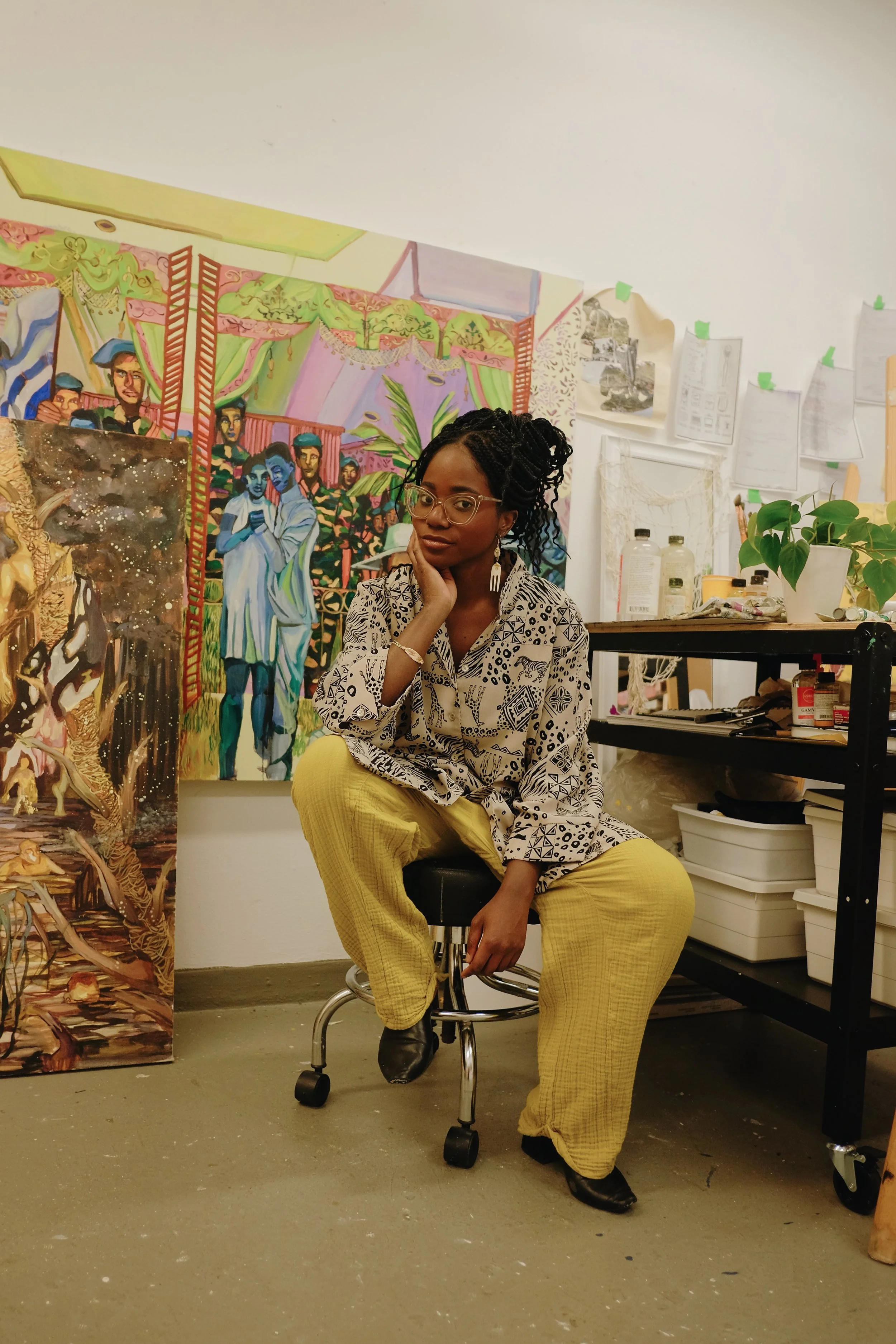Laurena Finéus
July 2026
Visual Arts
Ottawa, ON
Laurena Finéus is currently based in New York, NY, and has received an MFA at Columbia University (2024). She was born and raised in Ottawa, ON. She is a graduate of the University of Ottawa with a Bachelor of Fine Arts.
Her work has been exhibited at the Hudson River Museum (2023), Jenkins Johnson (2023), Wallach Art Gallery, NY (2023), G101 (2022), Karsh-Masson Gallery (2021), the Ottawa Art Gallery (2021), and Art mûr (2019) among others. Her work is also a part of a range of private collections internationally. She was the recipient of the Helen Frankenthaler Fund (2023), the Elizabeth Greenshields Foundation Grant (2022), the Ottawa Arts Council IBPOC Emerging Artist Award (2022), the Edmund and Isobel Ryan Visual Art Scholarship (2020), and the Ineke Harmina Standish Memorial (2019).
BIO
2025/2026 AIRIE Fellows
2025/2026 AIRIE Fellows
July 2025 Sterling Rook
August 2025 Thandeka Mfinyongo
September 2025 Lee Pivnik
October 2025 Jewel Rodgers
November 2025 David Rahahę•tih Webb
December 2025 The Honourable Elizabeth A. Baker
January 2026 Jean Shin
February 2026 Shenny De Los Angeles
March 2026 Daveed Baptiste
April 2026 Ashia Ajani
May 2026 Coco Villa & Sheherazade Thénard
June 2026 Julius Karoubi
July 2026 Laurena Finéus
August 2026 Havîn Al-Sîndy
September 2026 Samuel Domínguez
October 2026 Sarah Doerfel & Vincent Scheers
December 2026 Ackeem Salmon

